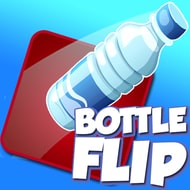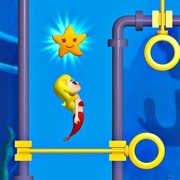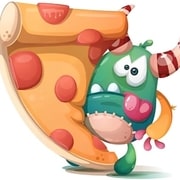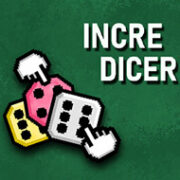Bottle Flip

Bottle Flip is a precision and timing-based game where the player’s task is to flip a bottle through the air and land it upright on a sequence of platforms. While the idea is straightforward, the execution demands quick reactions and a strong sense of rhythm. Each platform is spaced differently, requiring adjustments in timing, trajectory, and force.
The structure of the game is endless, with players aiming to chain as many successful flips as possible before making a mistake. Because every failed landing resets the run, Bottle Flip tests consistency and composure as much as accuracy.
Core Mechanics of Bottle Flip
The control system relies on taps, but beneath that simplicity lies a layered skill challenge. Each tap determines how high the bottle will travel, how much it spins, and whether the landing will stabilize on the next platform. Small differences in timing change the bottle’s arc completely, and players must quickly readjust to the unpredictability of each new jump. Success is built on developing a rhythm, since the game rewards consistent timing and punishes overcorrection.
- One-tap input controls height, distance, and spin simultaneously.
- Platform spacing changes constantly, forcing quick adaptation.
- Spin mechanics create varied landing outcomes that must be managed.
- Consecutive streaks measure performance, motivating players to improve runs.
Challenges That Shape Gameplay
The difficulty of Bottle Flip comes from balancing the bottle’s rotation speed with its jump trajectory. Too much spin causes the bottle to topple, while too little spin makes it fall flat. Platforms themselves vary in size, with narrow surfaces requiring nearly perfect accuracy. Long-distance gaps also appear, requiring greater force in the tap, but that force often increases instability, creating a trade-off that must be managed mid-game. The further players go, the greater the pressure, as one mistake ends the streak instantly.
- Small landing zones raise precision requirements.
- Longer jumps increase instability due to higher arcs.
- Rhythm breaks often cause failed landings when focus is lost.
Replay Motivation and Skill Growth
The game’s appeal comes from its replay loop, where each failed run motivates another attempt. Players gradually develop a sense of timing, learning how the bottle rotates and how to anticipate landing conditions. Success feels rewarding because it depends entirely on the player’s rhythm and precision rather than luck. Over time, mastery becomes less about individual flips and more about sustaining control across increasingly longer streaks.
Bottle Flip is a compact but highly challenging game that transforms a single mechanic into an endurance test of timing and precision. The satisfaction comes not from reaching a final stage, but from extending streaks and proving consistency under pressure. With endless replay opportunities and a simple but demanding structure, it is a skill game that thrives on repetition and personal improvement.
































